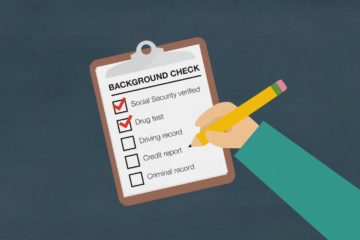1. Create a clear job description
Make sure you are clear about the type of person you want to hire, the skills they require, and the amount (or the range) you are willing to pay. Keep an accurate record of each candidate throughout the hiring process, including their strengths, weaknesses, expectations, and interview notes. You’ll need to refer to this again when selecting your preferred candidate.
2. Determine who is doing the recruiting
How much time will it take to recruit each new employee? Think about all the tasks involved, including:
- writing the job description
- advertising the job (online and offline)
- communicating with prospective candidates
- answering questions about the job and your business
- interviewing and screening applicants
- communicating with unsuccessful candidates.
You may not have time to do all of this. It might be more efficient to outsource this to someone in your team or a recruiter.
3. Apply for an Employee Identification Number
Obtain your Employer Identification Number (EIN) from the Internal Revenue Service (IRS). This is also known as an Employer Tax ID or Form SS-4. It would help if you had this to pay taxes and send other documents to the IRS. You can apply for an EIN online. This is a tax number that you as the employer have to set up to run the business – it isn’t something you need to get for each employee.
4. Maintain accurate tax records
You are legally required to keep proper tax records for four years. It would help if you kept them safe, secure, and easily accessible. Your accounting software should be able to do this for you.
The right accounting software will also help you monitor your business’s financial and tax status in real-time – for example, by keeping track of deductible expenses. Deductible expenses are business expenses that can be claimed to reduce your overall tax bill.
5. Keep track of withholding taxes
The IRS needs to know the yearly income for each of its employees. So your company is required to withhold money from each employee’s paycheck (withholding tax) to ensure that your employees can pay their taxes at the end of the financial year.
These forms must be completed:
- W-4 form
Each employee has to fill out a W-4 before they start work. This information is used by you to help figure out the amount of withholding tax for each of your employees. - W-2 form
As an employer, you need to report your employee’s income to both your employee and the IRS. This is done with a W-2 for full-time employees. It includes their taxable income, retirement contributions and benefits.
Each state has a separate tax form, so make sure you have the right one for your condition.
6. Remember key dates and tasks
Here are the actual IRS-related dates and tasks you need to remember:
- By 31 January
You need to send a W-2 form for each employee to the IRS. This includes state taxes and – depending on the state where your employees are located – you may be required to withhold state income taxes. - By the end of February
A copy of each completed W-2 must be sent to Social Security Administration. This information is used to calculate each employee’s wages for the previous calendar year. - Within three days of hiring a new employee
You must complete an Employee Eligibility Verification form (I-9) and keep a copy on record for three years. The employee should complete this with the employer signing and dating it. - Within 20 days of hiring a new employee
You need to contact your state’s New Hire Reporting Program. Each state matches new hire reports against other public records to ensure the accurate payment and receipt of public assistance – for example, welfare, food stamps and Medicaid. - During the calendar year
You must also file an IRS Form 940 – also called an Employer’s Annual Federal Unemployment (FUTA) Tax Return – if:- you paid wages of $1,500 or more in any quarter, or
- an employee worked for you in any 20 or more different weeks of the year.Funds from the FUTA tax are used to help pay unemployment compensation to workers who lose their jobs.
The IRS has a handy online calendar for businesses you can use for reminders.
7. Obtain and display posters about employee rights
All employees are entitled to certain minimum rights under state and federal law. However, many employees may not be aware of their rights or understand them. To help your employees out, you are required to display posters about employees’ rights in your workplace.
You can find out more about the Department of Labor’s workplace poster requirements for small businesses and download the posters you need.
8. Obtain workers’ compensation insurance
All businesses are required to have workers’ compensation insurance. This can be obtained:
- with a private provider.
- via self-insurance. This is when you choose to set aside money from the business to cover compensation payments to your employees.
- through your state’s Workers’ Compensation Insurance program. Find out more about these programs at the Office of Workers’ Compensation Programs (OWCP) within the Department of Labor.
Insurance is easy to forget – until you need it. When you’re running a business, things don’t always go to plan. Think of it as protection now, should something go wrong in the future.
9. Set up a payroll system
Your options when setting up your payroll include:
- doing it all yourself.
- outsourcing the setup to your accountant or bookkeeper.
Make sure your accounting software can address all your payroll needs. Adding payroll to your accounting software should make paying employees painless.
Look for software that:
- makes it simple to stay compliant
- can pay your employees efficiently
- files reports with the Inland Revenue Service (IRS)
10. Keep a file for each employee
It’s essential to keep up-to-date and accurate records for all your employees so that you can use them to figure out their pay and entitlements. You will also need records to give to your employee or their union/representative if requested.
Each employee’s file should include their:
- full name, address and contact details
- emergency contact details
- a signed copy of their employment contract (full-time or part-time)
- tax details
- preferred payment method and details, for example internet banking
- any other important information about them.
Create an electronic version of these details and back it up in the cloud with services like Box, Dropbox, or Google Drive. These records must be kept for at least seven years.
Contact your advisor if you’re not sure what information you can and should collect for each employee.
11. Make it easy for your employees to access all your cloud programs
Depending on your type of business, your employees may need access to non-confidential company information such as policies, training manuals, procedures, or job-specific instructions. Consider using a single sign-on service like OneLogin, Okta, or Google Cloud. You can set up each employee with access to personalized information. And if you set yourself up as an administrator, you can also restrict their access if you need to. Remember to make sure you can change the passwords to any third-party websites – there may be times when your employees no longer need access to these websites.
12. Be clear about goals and expectations
Even if you have just one employee, you must define and agree on what is expected of them from day one. They should already have a good idea about this from the interview process.
The reverse is also true. Let them know what you will provide in return. This is a professional relationship, and it should be based on mutual trust, respect, and honesty. The better you treat your employees, the harder they will work for your business.
Your staff are your most valuable asset – choose wisely
Whether you’re hiring one employee or several, it’s essential to follow the steps above. And don’t forget to think about how you will retain and reward excellent work. There are many ways to do this other than salary and wages, for example, incentives and non-financial rewards.
Remember that your employees are your company’s most valuable asset. Good people are hard to find. And hiring can be time-consuming and expensive.
If you get the process right, you’ll ensure you hire the right people. And if you look after your employees, they’ll stay with you longer, and your business will perform better.


